#metriorhynchus
Text

"The marine reptiles of the genus Metriorhynchus, which lived during the Upper Jurassic to Lower Cretaceous period and were about 8 feet long, were already completely adapted to life in the open sea, since they had no armour-plating and their limbs had been converted to paddles."
Prehistoric Sea Monsters. Written by Dr. Josef Augusta. Illustrated by Zdeněk Burian. 1966.
Internet Archive
192 notes
·
View notes
Text
Thalattosuchus and Leedsichthys
Quickly stopping by to report on a new paper describing stomach contents of a thalattosuchian (Jurassic marine crocodile).
The paper in brief describes a specimen of Metriorhynchus superciliosus (aka Thalattosuchus) with preserved stomach contents, which is already rare enough as is. What's even more interesting is that the stomach contents preserve both the gill rakes of the large fish Leedsichthys as well as various mollusc shells. Strange prey for what's a rather small piscivore. Although it was previously suggested that Metriorhynchus/Thalattosuchus attacked living Leedsichthys, this appears to have been based on missinterpreted evidence and given the enormous size difference its way more likely that the fish was simply scavenged, sorta like a kind of Jurassic whalefall. This actually finds support in the mollusc shells, which might have been ingested on accident alongside the fish remains.
Top left: The skeleton of this Thalattosuchus specimen
Top right: The stomach contents in detail (G are gill rakes, S are shells)
Bottom left: Live reconstriction of Thalattosuchus by Gabriel Ugueto
Bottom right: Live reconstruction of Leedsichthys by @knuppitalism-with-ue
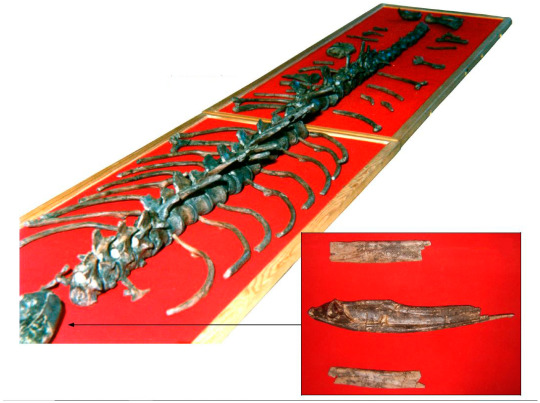
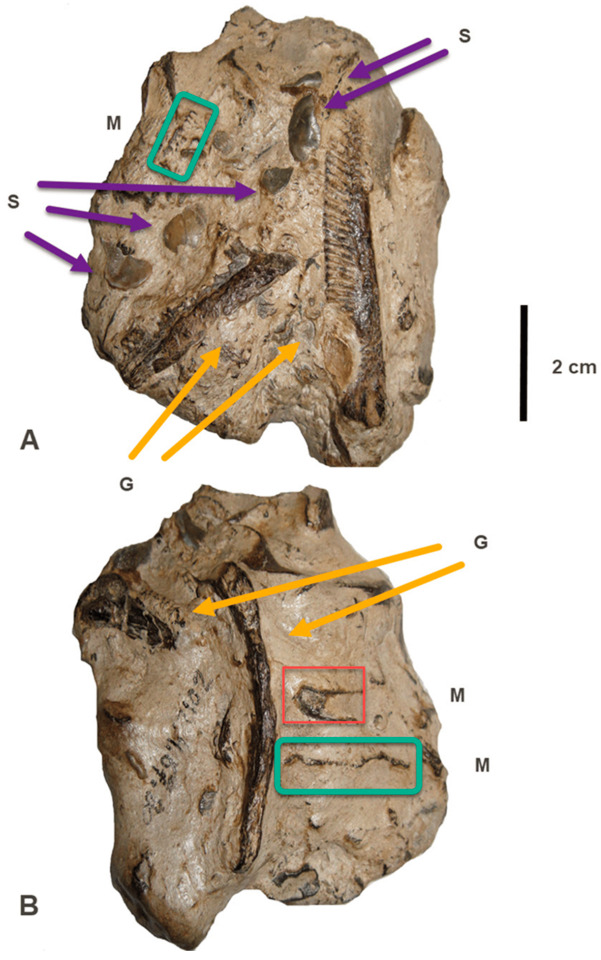
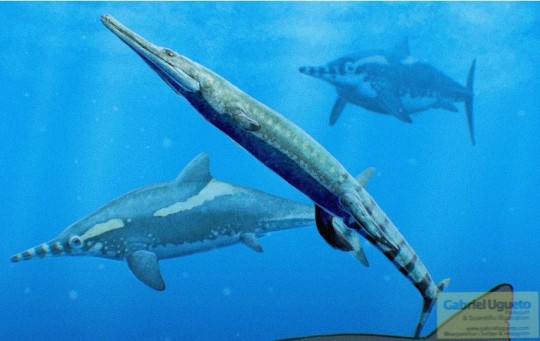

The paper itself:
Fossil Studies | Free Full-Text | The Diet of Metriorhynchus (Thalattosuchia, Metriorhynchidae): Additional Discoveries and Paleoecological Implications (mdpi.com)
#thalattosuchus#thalattosuchia#metriorhynchus#metriorhynchidae#leedsichthys#palaeoblr#paleontology#prehistory#jurassic
37 notes
·
View notes
Text

Another sketch brought to you by #paleostream
Vampyranassa, hovering next to a Metriorhynchus.
209 notes
·
View notes
Text




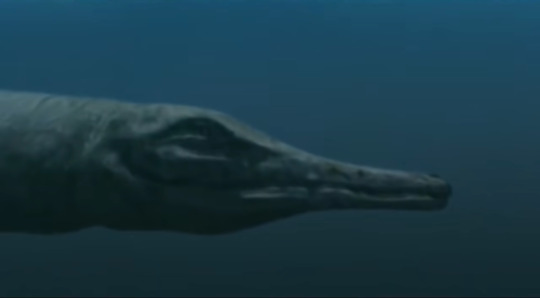
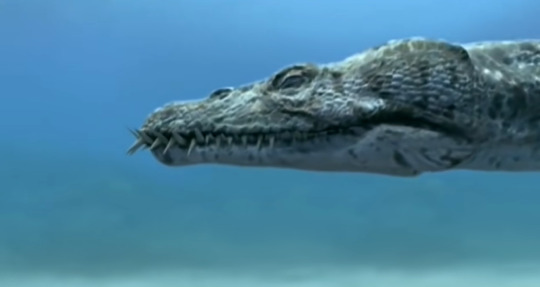








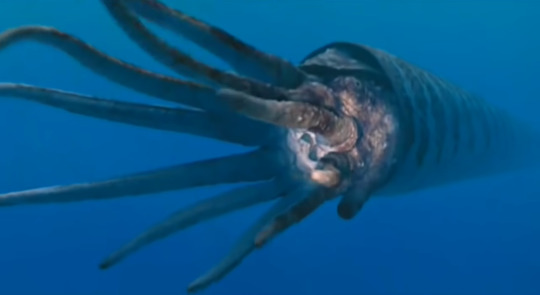

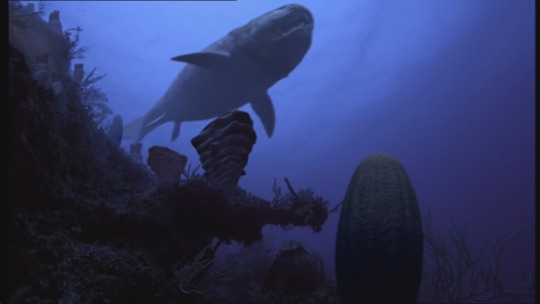
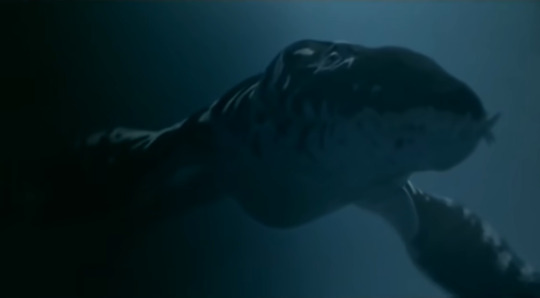


Top twenty sea monsters for the 20th anniversary of Sea Monsters: A Walking With Dinosaurs Trilogy.
#sea monsters#chased by sea monsters#walking with#mosasaur#megalodon#liopleurodon#dunkleosteus#basilosaurus#cymbospondylus#cameroceras#archelon#xiphactinus#leedsichthys#arsinoitherium#megalograptus#pteranodon#elasmosaurus#nothosaurus#metriorhynchus#odobenocetops#hesperornis#tanystropheus#stethacanthus#mine#q
7 notes
·
View notes
Text
December 13th, 2023
Day #13 on our Christmas Countdown is…
Continue reading Untitled

View On WordPress
0 notes
Text
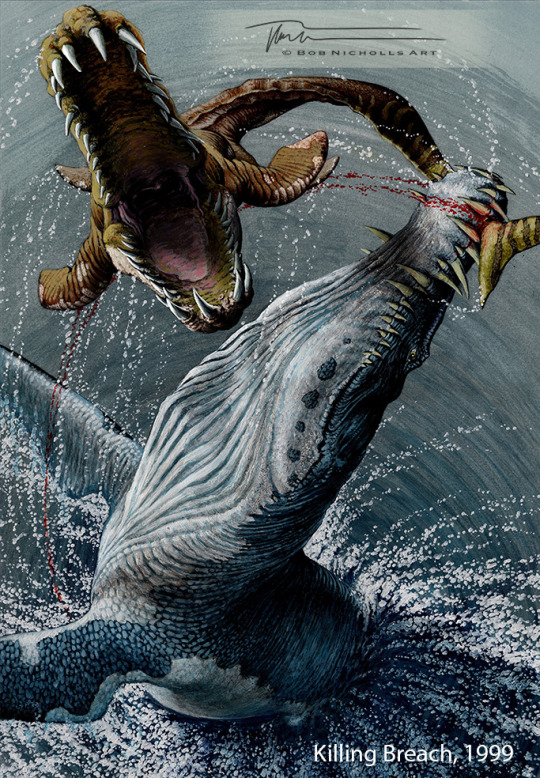
My 25 years of palaeoart chronology...
I only had a few commissions in my fist year as a freelance artist. No one knew me or what I was doing, so I spent most of my time photocopying samples of my work and posting them to universities and museums. It took ages and cost a fortune but there wasn't any social media back then, even email was rare!
This "Killing Breach" painting was commissioned in 1999, by a TV company in Bristol, for a documentary series proposal. It features Liopleurodon and Metriorhynchus.
#Art#Painting#PaleoArt#PalaeoArt#SciArt#SciComm#DigitalArt#Illustration#Dinosaurs#Birds#Reptiles#Palaeontology#Paleontology
129 notes
·
View notes
Text
Did phytosaurs have lips?

Mystriosuchus planirostris by @paleoart, the inspiration for this post.
2016 was many things, but one of the best was definitely being the call out year for many archaic paleoartist mistakes. One of these was the absence of lips in many reconstructions, from the skin-wrapped maws of theropod dinosaurs to the bare-toothed saber-toothed cats to the rather ridiculous depictions of entelodonts and other prehistoric mammals as fanged demons. This year saw the publication of various papers showing that teeth do generally in fact need lips to be protected from damage and moistened, meaning that many animals traditionally reconstructed as bared-toothed monsters need a healthy amount of oral tissue.
That said, things aren’t black and white. Crocodilians, after all, still have bare teeth. In one of these papers, Larson et al 2016, it’s been suggested that their aquatic habits compensate for their lack of lips, as humidity certainly isn’t a problem. However, as the Mark Witton link above informs you, many crocodiles go through prolonged periods of life on land without tooth degradation. It also doesn’t cover how terrestrial crocodylomorphs would have coped with the absence of lips, or why many aquatic vertebrates like dolphins (Platanista aside) still kept their lips.
It seems, therefore, that crocodiles are simply off in this regard. Their liplessness actually appears to derived from a highly unusual facial development process, which essentially renders their entire face a single “scale”. This seems to have evolved in order to develop the extensive Integrumentary Sense Organs (ISOs), thinning the facial skin in order to increase sensivity, and it carried over into their terrestrial descendants.
This obviously raises the question of whereas groups similar ecologically and morphologically to aquatic crocodilians underwent a similar process. Where they also lipless, or did they in fact retain their lips, making comparisons to crocodiles all the more questionable?
The Phytosaurs

Phytosaur head diversity by Darren Naish. Taxa included: Smilosuchus gregorii, Pravusuchus hortus, Mystriosuchus westphali, Paleorhinus bransoni and Pseudopalatus pristinus.
Phytosaurs were, in some respects, the “original crocodiles”, having evolved and prospered long before crocodylomorphs ever touched the water. Although they weren’t particularly closely related (birds are closer to crocodiles than phytosaurs are), these archosauriform reptiles did hit most of the same notes as crocodiles: barrel-shaped bodies, extensive osteoderm armours (in some cases even better protected, due to the bell-shaped cap on the throat and various scutes on the forelimbs and belly), generally short limbs and large, paddle-like tails.
While some phytosaurs explored odd ecological niches – Nicrosaurus and similar taxa are adapted to a primarily terrestrial lifestyle, while Mystriosuchus was inversely so specialised to life in the water that it was practically the Triassic Metriorhynchus -, a generally semi-aquatic lifestyle for most phytosaurs can be inferred due to due sheer prevalence in freshwater and shallow marine deposits, limb proportions and shape, laterally flattened and powerful tails and retracted nostrils (though keep reading).
Various tracts attributed to these animals similarly imply a close functional match between phytosaurs and crocodiles. Various swimming tracts have been attributed to phytosaurs, while the Apatopus footprints show an interesting insight on these animals’ terrestrial locomotion capacities, being capable of an erect gait like archosaurs and mammals, including modern crocodiles and alligators. Paleopathology studies indicate similar behaviours such as interspecific biting (hence the need for strong armour), and perhaps more damningly endocast studies show that the general phytosaur brain shape was rather similar to that of modern crocodilians (albeit with a few differences, like the size of the brain and the presence of multiple sinuses; see below).
For all intents and purposes, phytosaurs were functionally crocodilian, offering one of the most extreme cases of convergent evolution ever recorded. But no matter how close, phytosaurs were still off the mark in various ways.
Phytosaur facial anatomy and morphology
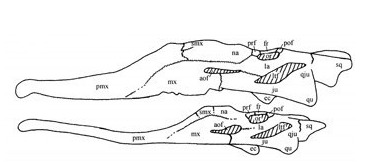
Pseudopalatus buceros skulls, exemplifying the general morphology of phytosaur skulls as well as interspecific variation. Notice massive premaxila.
The most classical thing you’ve ever heard about phytosaurs was how they differ from crocodiles in having the nostrils be close to the eyes/on top of the head rather than at the tip of the snout. This is true; as you can see, the nostrils are located in front or above the eyes in a “volcano-like” elevation; combined with the nostril-less and often conical snouts, this gives them a distinctive dolphin-like profile.
Like in cetaceans, this nostril placement would come in handy on a mostly aquatic lifestyle, avoiding drag and allowing the animal to surface only a small part of the head and remain concealed underwater. However, unlike cetaceans – and marine reptiles such as plesiosaurs -, this nostril position is not derived from nasal retraction. In fact, phytosaur nostrils are sometimes noted as being rather protracted, sometimes as a result of the general elevation of the nasal region.
Instead, what happened is that phytosaurs elongated the premaxila at the expense of the other skull bones. Unlike crocodiles – and whales and plesiosaurs and many other aquatic tetrapods -, half or more of the phytosaur upper jaw is composed of a single bone, normally a vestige at the end of the jaw in most amniotes, that expanded radically. This hints at a pretty rapid elongation of the snout, explaining maybe why long-snouted phytosaurs appear “out of nowhere” in the fossil reccord.
Predictably, this could also hint at rather atypical development, which is etremely important in dictating the presence or absence of lips.
Another frequently cited difference is the presence of antorbital fenestrae. These are the famous “holes” in front of the eyes present in most dinosaurs and other archosauriform reptiles. Crocodiles have lost them, but they are present in phytosaurs, though they can be reduced in some species. Perhaps associated with this, phytosaurs also have extensive antorbital sinuses, while crocodilians lack them altogether. Phytosaurs also have an extensive premaxillary sinus, though as crocodilians have most of their snout taken by the nasal airways this may not make a lot of difference.
With a few exceptions, most aquatic crocodilians have conical teeth; they compensate for the lack of meat-cutting speciations with the infamous “death-rolls”. Phytosaurs, by contrast, generally have serrated teeth, and combined with the presence of crests on many specimens it seems unlikely that these animals engaged in “death-rolls”, instead opting for more typical meat-eating behaviours. To date longirostrine phytosaurs are the only “gharial-like” vertebrates with serrated teeth, and it might explain why they were frequently associated with the carcasses of terrestrial vertebrates like rhynchocephalians and dinosaurs.
Unlike the teeth of crocodiles, phytosaur teeth seem to be rarely interlocked. Even without lips, it seems likely that the upper jaw teeth covered the lower jaw ones.
What about the lips?
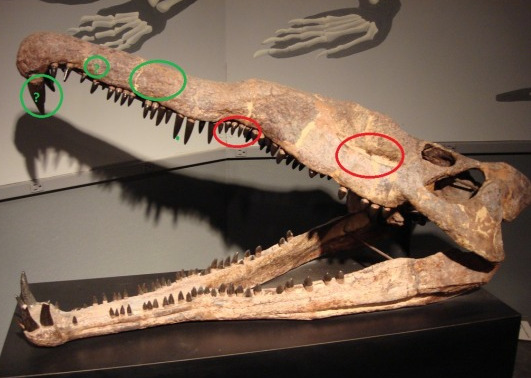
Leptosuchus skull, illustrating the basic points for and against phytosaur lips. For are in red: anteorbital fenestra and serrated teeth. Against are in green: long prexmaxila, POSSIBLE ISOs, front teeth POSSIBLY too large to fit within lips. The latter two are of course ambiguous.
With the above in mind, the absence for or against phytosaurian lips is…mixed.
The rapid premaxilary development in phytosaurs is the key to understanding how the jaw integument of these animals worked. It is possible that the premaxila’s growth prevented the formation of conventional lips, either due to physical and metabolic constraints or because the same genes triggering it could have prevented the development of lips. Perhaps the same pressures causing the crocodilian “single scale” would have been forced on phytosaurs by this developmental quirk.
On the other hand, other parts of the phytosaur skull anatomy seem to suggest the presence of lips:
The aforementioned antorbital fenestrae suggests that the phytosaur skull was less “skin-tight” than that of crocodilians. In modern birds, the only living reptiles with antorbital fenestrae, that area of the skull is covered by various soft tissues, and indeed areas of the avian beak devoid of a rhamphotheca tend to be covered by fleshy lips.
Serrated teeth tend to be more vulnerable than conical teeth to degradation, so most predatory animals that possess them have them covered by lips. The only crocodilians with clearly serrated teeth are terrestrial species and the fairly basal thalattosuchians, which are still on the limbo on whereas they had lips or not.
It is possible that phytosaurs found themselves in an unique integumental arrangement. Perhaps they did become lipless, with a “single scale” covering the jaws, while the rest of the head had a more normal integument.
A deciding factor in this argument would be the discovery of ISOs on phytosaur jaws. However, structures associated with these organs, such as pits, are rarely discussed outside of the context of pathology when it comes to these animals. There is plenty of literature on pits and holes in phytosaur skulls being caused by fights and bites, but few on any possible natural ones.
Conclusion
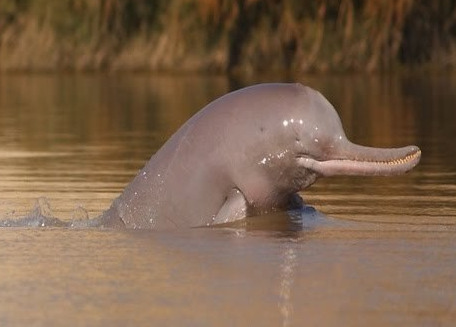
Modern Ganges River Dolphin. Although it has exposed teeth, it’s also not the norm among cetaceans.
Just because something resembles another doesn’t mean that there is an exact equivalency. Case in point: no matter how close phytosaurs got to crocodilians, they still differed in many aspects, and could not be mistaken for them in life.
It’s clear that skin-wrapping is a tremendous lack of appreciation for the organic nature of extinct animals. The lack of lips in crocodilians has been taken far too long to be the “norm”; but, as it turns out, it is an anomaly among the usual amniote tendencies.
We may never know for sure whereas phytosaurs had lips or not. Hell, it’s even possible that some had while others went full Platanista. However, far too often are they taken to be crocodile-like for granted, without other possibilities, equally as valid as they are, taking into consideration.
Hopefully, further research will grant us insights on how these already spectacular animals looked in life.
References:
Reisz, R. R. & Larson, D. (2016) Dental anatomy and skull length to tooth size rations support the hypothesis that theropod dinosaurs had lips. 2016 Canadian Society of Vertebrate Paleontology Conference Abstracts, 64-65.
Grigg, G., & Kirshner, D. (2015). Biology and evolution of crocodylians. Csiro Publishing.
Soares, D. (2002). Neurology: an ancient sensory organ in crocodilians. Nature, 417(6886), 241-242.
Stocker, M. R. & Butler, R. J. 2013. Phytosauria. Geological Society, London, Special Publications 379, 91-117.
Kimmig, J. 2013. Possible secondarily terrestrial lifestyle in the European phytosaur Nicrosaurus kapfii (Late Triassic, Norian): a preliminary study. Bulletin of the New Mexico Museum of Natural History and Science 61, 306-312.
Gozzi, E. & Renesto, S.A. 2003. Complete specimen of Mystriosuchus (Reptilia, Phytosauria) from the Norian (Late Triassic) of Lombardy (Northern Italy). Rivista Italiana Di Paleontologia e Stratigrafia 109(3): 475-498.
Michelle R. Stoker; Sterling J. Nesbitt; Li-Jun Zhao; Xiao-Chun Wu; Chun Li (2016). “Mosaic evolution in Phytosauria: the origin of long-snouted morphologies based on a complete skeleton of a phytosaur from the Middle Triassic of China”. Society of Vertebrate Paleontology 76th Annual Meeting Program & Abstracts: 232.
4 notes
·
View notes
Text
Mermay Prompts (Unofficial)- Prehistoric Edition
Anomalocaris
Trilobite
Megalodon
Essexella
Dunkleosteus
Ammonite
Icthyosaur
Plesiosaur
Cameroceras
Opabinia
Tamisiocaris borealis
Hurdia victoria
Hallucigenia
Wiwaxia
Ottoia prolifica
Haplophrentis carinatus
Isoxys
Marrella
Leanchoilia
Dickinsonia
Syllipsimopodi bideni
Styletoctopus
Tusoteuthis
Priscomyzon riniensis
Asterotrygon maloneyi
Glyphithyreus
Leedsichthys
Tylosaurus
Metriorhynchus
Kronosaurus
Prehistoric hominid (Reverse Mermaid!)
The last prompt is a bit of a wild card, with the human side being prehistoric as well as the fish.
(I personally will not be able to post every day, but I intend to fill all 31 prompts).
This is not intended to be scientific, more of an exploration of sea creature art, and the extinct sealife I see getting passed over in most MerMays. I'll still be making traditional mermaid art for most of these (with a twist). I hope you enjoy.
8 notes
·
View notes
Text
My big idea for Genie Team Season 10
Well, this is my 500th post, so I thought I’d talk about something big. That being one big idea I have for Grantgfan’s Genie Team season 10.
With that being the 10th season, I thought that my idea for it would be pretty big too. And my idea for The Genie Team season 10 is… the genies, their masters, and their friends finding out the realization of dinosaurs (and other prehistoric creatures) all around the world.
And this whole thing would be teased at the end of season 9, where a large map of the world with thumbtacks stuck in it, with each one depicting a known location of dinosaur sightings. They’d be 14 in all (at the moment); with 5 in North America, 3 in South America, 4 in Africa, 1 in Indonesia, and 1 in Australia. And as season 10 progresses, more thumbtacks would be added to the map, with a different color representing a different wave; like red for wave 1, blue for wave 2, green for wave 3, and yellow for wave 4.
And speaking of waves, the dinosaurs and other prehistoric creatures would make appearances in the several waves below.
WAVE 1: Dryosaurus, Gallimimus, Homalocephale, Kentrosaurus, Pachycephalosaurus, Styracosaurus, Ankylosaurus, Brachiosaurus, Camarasaurus, Corythosaurus, Edmontosaurus, Ouranosaurus, Parasaurolophus, Stegosaurus, Albertosaurus, Ceratosaurus, Dilophosaurus, Velociraptor, Acrocanthosaururs, Allosaurus, Spinosaurus, Tyrannosaurs Rex, Triceratops, Torosaurus, Carcharadontosaurus, Alioramus, Apatosaurus, Baryonyx, Compsognathus, Deinonychus, Diplodocus, Iguanodon, Maiasaura, Ornithomimus, Panoplosaurus, Tenontosaurus, Thescelosaurus, Wuerosaurus, Yangchuanosaurus, Pteranodon, Dimorphodon, Mosasaurus, and Tylosaurus.
WAVE 2: Othnielia, Hypsilophodon, Mamenchisaurus, Supersaurus, Brontosaurus, Ultrasaurus, Lambeosaurus, Shantungosaurus, Anatotitan, Olorotitan, Tsintaosaurus, Saurolophus, Hadrosaurus, Altirhinus, Centrosaurus, Einiosaurus, Pentaceratops, Euoplocephalus, Protoceratops, Psittacosaurus, Avaceratops, Microceratus, Orodrmeus, Gastonia, Edmontonia, Altirhinus, Brachylophosaurus, Gryposaurus, Hoplitosaurus, Stegoceras, Prenocephale, Tuojiangosaurus, Lexovisaurus, Paranthodon, Miragaia, Struthiomimus, Troodon, Proceratosaurus, Herrerasaurus, Torvosaurus, Tarbosaurus, Carnotaurus, Majungasaurus, Desplatosaurus, Suchomimus, Irritator, Procompsognathus, Ornitholestes, Cearadactylus, Geosternbergia, Nyctosaurus, Elasmosaurus, Plesiosaurus, and Styxosaurus.
WAVE 3: Dreadnoughtus, Alamosaurus, Argentinosaurus, Paralititan, Patagotitan, Sauroposeidon, Puertasaurus, Therizinosaurus, Convolosaurus, Leaellynasaurua, Stenopelix, Garudimimus, Wannanosaurus, Parkosaurus, Nipposaurus, Callovosaurus, Segnosaurus, Deinocheirus, Leptoceratops, Plateosaurus, Mussaurus, Melanosaurus, Oviraptor, Gigantoraptor, Caudipteryx, Lesothosaurus, Camptosaurus, Camposaurus, Yutyrannus, Rugops, Utahraptor, Dakotaraptor, Austroraptor, Sinosauropteryx, Mapusaurus, Tyrannotitan, Giganotosaurus, Gorogasaurus, Chirostenotes, Sinraptor, Microraptor, Sinornithosaurus, Archaeopteryx, Epidexipteryx, Caelestiventus, Tupuxuara, Zhenyuanopterus, Tropeognathus, Ornithocheirus, Hatzegopteryx, Alanqa, Hainosaurus, Icthyosaurus, Dakosaurus, Pliosaurus, and Temnodontasaurus.
WAVE 4: Shunosaurus, Saltasaurus, Nigersaurus, Amaragasaurus, Sinoceratops, Nasutoceratops, Agujaceratops, Chasmosaurus, Chungkingosaurus, Gigantspinosaurus, Dravidosaurus, Nodosaurus, Sauropelta, Minmi, Muttaburrasaurus, Dracorex, Stygimoloch, Dromiceimimus, Coelophysis, Eoraptor, Syntasaurus, Staurikosaurus, Saltopus, Shamosaurus, Struthiosaurus, Masiakasaurus, Eustreptospobdylus, Monolophosaurus, Limnoscelis, Labyrinthodontia, Diplocaulus, Koolosuchus, Metriorhynchus, Microposaurus, Sarcosuchus, Deinosuchus, Ichthyostega, Eogyrinus, Cacops, Seymouria, Prinoshuchus, Acanthostega, Eryops, Mastodonsaurus, Metoposaurus, Nothosaurus, Tanystropheus, Mesosaurus, Cryptoclidus, Kronosaurus, Liopleurodon, Shonisaurus, Onchopristus, Protostega, Archelon, Globidens, Ramphorhyncus, Ludodactylus, Scaphognathus, Tupandactylus, Azdarcho, Anomalocaris, Hallucigenia, Pterygotus, Ammonite, Cladoselache, Dunkleosteus, Eustenopteron, Hylonomus, Dimetrodon, Scutosaurus, Kannemeyeria, and Lystrosaurus.
That’s the four main waves of dinosaurs, pterosaurs, marine reptiles, and other prehistoric creatures that’ll appear in Genie Team season 10. It’s a lot of species, I know, but it’ll help in making season 10 of Grantgfan’s Genie Team even bigger. And I’d gladly help him in figuring out the scripts for future episodes of season 10.
2 notes
·
View notes
Video
youtube
AMPHIBIAN ANCESTORS REWARD METRIORHYNCHUS II Jurassic World The Game II Dinosaurs Game
Dinosaurs Game is pleased to introduce.
Dinosaurs BATTLE AMPHIBIAN ANCESTORS REWARD METRIORHYNCHUS.
The best video about dinosaurs. See dinosaurs fighting eachother in a series of short battle clips. Spectacular dino fights give you the taste of how the jurassic world looked like. Watch the epic DINOSAURS BATTLE AMPHIBIAN ANCESTORS REWARD METRIORHYNCHUS - dinosaur video for kids, family and dinosaurs fans. Check out our other movies to see battles of tyrannosaurus rex (t-rex), triceratops, protoceratops and other dinosaurs.
#JurassicWorldTheGame
#JurassicWorldAlive
#DINOSAURS
#DINOSAURSGAME
0 notes
Text
tag game
Tagged by @cyrraluu, thank you so much!
And I'm probably late, sorry. My job will kill me someday I swear......
Ahem. Anyway.
Last song: Smile - JuiceWRLD, The Weeknd. Spotify suddenly played this while I was driving home ten minutes ago, so...
Last Movie: Zack Snyder's Justice League. Dunno why. I don’t like Snyder and I don’t like Justice League. But I killed four hours on this movie anyway.
Currently watching: Avatar: The Legend of Korra. I know that no one likes Korra, especially with compared to Aang... but hey. Korra’s cool, okay?
Currently reading: some Sylvaina fanfics, yas, again. :D
Currently craving: some dark beer. And maybe a few cigarettes. And dumplings. God, I want dumplings.................
Tagging: @koramora @spring-alaska and dunno anyone who wants to join.
5 notes
·
View notes
Photo
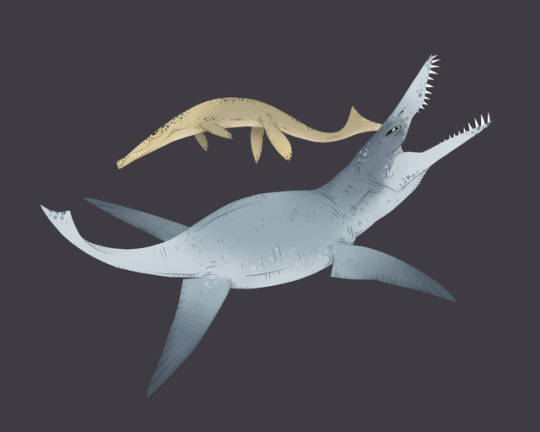
Drew Liopleurodon again, this time with a metriorhynchus
633 notes
·
View notes
Text
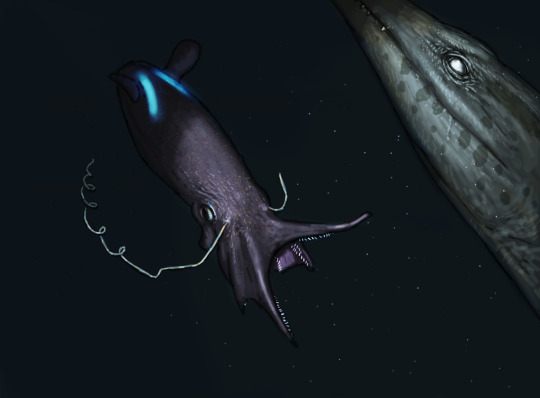
Another #paleostream sketch
Vampyranassa, swimming through the dark only to bump into a Metriorhynchus.
322 notes
·
View notes
Photo
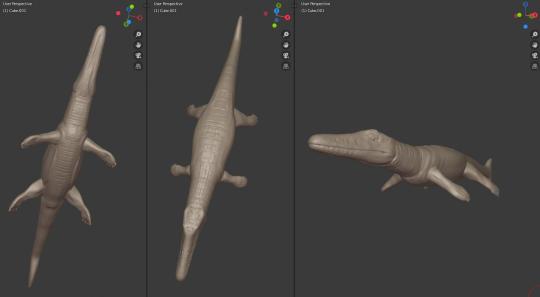

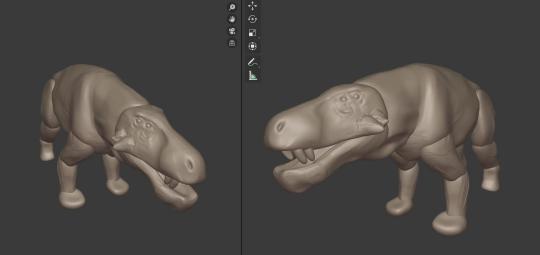


Speed sculpts from June 22th - 27th
Metriorhynchus sp.
Allosaurus as Al Capone
Made up creature from my sketchbook
Tetraceratops insignis
Dsungaripterus weii
Thylacosmilus atrox
#Metriorhynchus#Allosaurus#Tetraceratops#Dsungaripterus#Thylacosmilus#crocodylian#dinosaur#synapsid#pterosaur#metatherian#al capone#creature#sculpting#speedsculpt#speed sculpt#blender3d#blender#practice#digitalart#paleoart#creatureart#creaturedesign#art#myart
41 notes
·
View notes
Photo
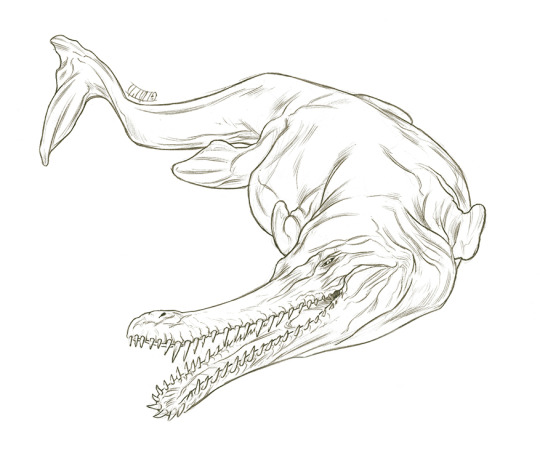
Sketch_Malicious Metriorhynchus.
Pencils, 2019.
85 notes
·
View notes
Note
Hi! Can I ask you about 9 and 19? :> Sorry, I'm a little nervous, cuz I really like your art so much... :'D And sorry if you've been already asked about that.
Hi!! Thank you for the support!
9 - How much time do you spend drawing on an average day?
From 5 to 14 hours on workdays (I don’t draw on weekends), depending on my deadlines and my mood/health.
19 - What is the most difficult thing for you to draw?
Hard surfaces, vehicles, robots. I just need to study them more. xD’
Hope it answers you, have a great day and thank you again! :3
4 notes
·
View notes